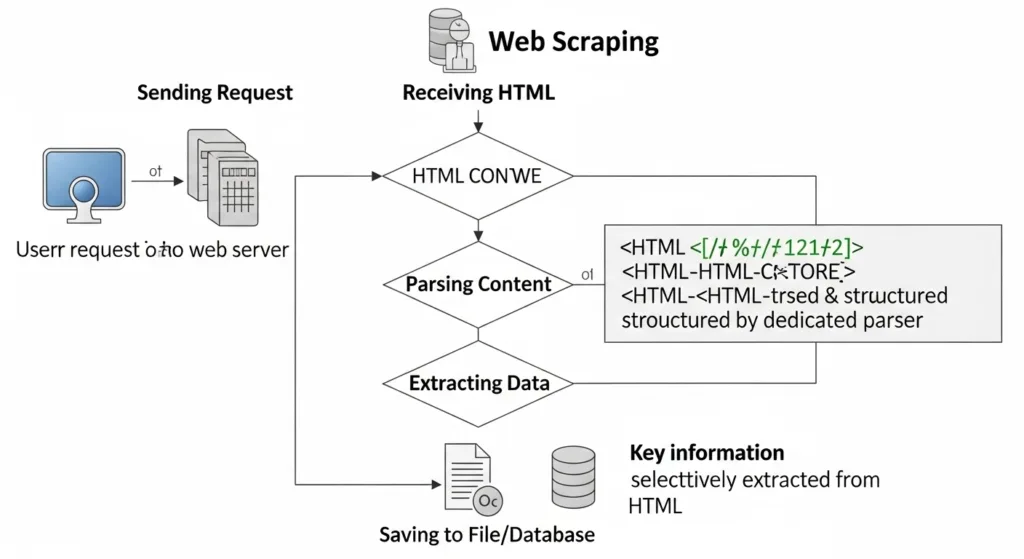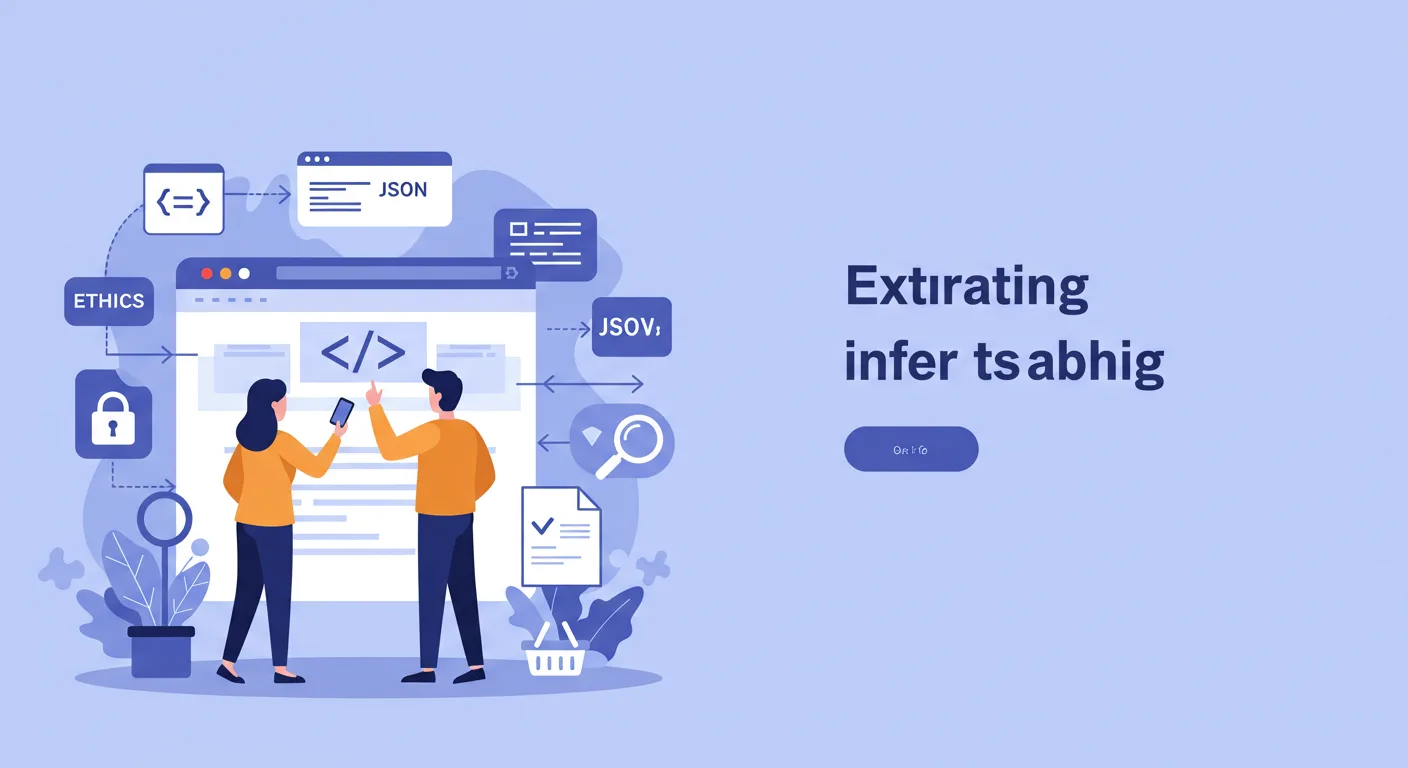Learn what web scraping is, how it works, its legal aspects, tools, and applications in SEO, marketing, and business intelligence.
Introduction: Web Scraping
In today’s digital-first world, data has become the new oil — a valuable resource that powers decisions, strategies, and innovations across industries. One of the most powerful tools for harvesting this data is web scraping.
Whether you’re a marketer analyzing competitor pricing, a developer building AI models, or a researcher gathering insights, web scraping offers a fast and efficient way to extract structured data from websites.
This article will serve as your comprehensive guide to web scraping, covering everything from the basics to advanced techniques, legal concerns, and real-world applications.
We’ll also explore how to optimize your scraping strategy using SEO automation and best practices.
What is Web Scraping?
Web scraping, often referred to as web crawling or data scraping, is the process of automatically extracting large amounts of data from websites.
This data can include text, images, prices, contact information, product descriptions, and more. It’s typically done using specialized software or scripts that simulate human browsing behavior but at a much faster rate.
Example:
Data is extracted by web scrapers through HTTP requests sent to target websites.
While manual copying and pasting of data from web pages is possible, it’s inefficient and error-prone. Web scraping automates this process, allowing users to collect vast datasets in minutes.

How Does Web Scraping Work?
The basic workflow of web scraping involves three main steps:
1. Requesting Data
A scraper sends an HTTP request to a target website. The server responds by sending back the HTML content of the page.
2. Parsing Content
The scraper parses the HTML content to locate specific elements such as headings, paragraphs, tables, or links. This is often done using libraries like BeautifulSoup (Python) or Cheerio (JavaScript).
3. Extracting and Storing Data
Once the relevant data is identified, it’s extracted and stored in a structured format like CSV, JSON, or a database.
Example:
Data is parsed using CSS selectors or XPath expressions to identify and extract specific elements.
Why Is Web Scraping Important?
Web scraping plays a critical role in various domains due to its ability to automate data collection and provide actionable insights. Here are some key reasons why it matters:
- Market Research and Competitive Intelligence
- SEO and Content Strategy
- Lead Generation
- Academic and Scientific Research
- Price Monitoring and Dynamic Pricing
Types of Web Scraping Tools
There are several types of web scraping tools available, each suited for different use cases and skill levels.
| Tool Type | Examples | Pros | Cons |
| Browser Extensions | Scraper, Data Miner | Easy to use, visual interface | Limited scalability |
| No-Code Platforms | Octoparse, ParseHub | No programming required | May lack customization |
| Custom Scripts | Python (Scrapy, Requests), JS (Puppeteer) | Highly customizable | Requires coding skills |
| Cloud-Based Services | Bright Data, ScrapeOps | Scalable and reliable | Can be costly |
Legal and Ethical Considerations
One of the most frequently asked questions about web scraping is whether it’s legal. The answer depends on several factors, including jurisdiction, the type of data being scraped, and how it’s used.
Is Web Scraping Legal?
Generally speaking, scraping publicly available data is legal, but there are exceptions:
- Terms of Service Violation
- Personal Data (GDPR/CCPA)
- Copyrighted Content
Example:
Content may be protected under intellectual property laws, making unauthorized scraping illegal.
Ethical Scraping Practices
Even if scraping is technically allowed, it should be done ethically:
- Respect robots.txt
- Use Rate Limiting
- Rotate IPs
- Identify Your Bot
Challenges in Web Scraping
Despite its usefulness, web scraping comes with several challenges:
- Anti-Scraping Measures (CAPTCHA, IP blocking)
- Dynamic Content (JavaScript rendering)
- Maintaining Scrapers
- Large-Scale Infrastructure
Best Practices for Effective Web Scraping
To ensure successful and sustainable web scraping, follow these best practices:
✅ Start Small and Test
✅ Use Delays Between Requests
✅ Rotate IPs and Use Residential Proxies
✅ Monitor and Maintain Scrapers
✅ Store Data Securely
Web Scraping and SEO Automation
Web scraping is a cornerstone of SEO automation, helping marketers and analysts gather competitive intelligence and improve search engine rankings.
Applications in SEO:
- Backlink Analysis
- Keyword Research
- Content Gap Analysis
- SERP Scraping
Example:
Rankings are monitored using automated tools that scrape SERPs regularly.
By integrating web scraping into SEO workflows, businesses can gain deeper insights and make data-driven optimizations.
Case Studies: Real-World Uses of Web Scraping
Case Study 1: E-commerce Price Comparison Tool
An online retailer built a price comparison tool by scraping product prices from multiple competitors daily.
Case Study 2: Real Estate Market Analysis
A real estate startup scraped housing listings across major portals to analyze pricing trends.
Case Study 3: Academic Research on Social Media Trends
A university research team scraped Twitter and Reddit posts to study public sentiment around climate change.
❓ Frequently Asked Questions (FAQ)
Q1: What is the best tool for web scraping?
A: For beginners, browser extensions like Scraper or no-code tools like Octoparse are great. For developers, Python-based tools like Scrapy or Selenium offer more control.
Q2: Can I scrape Google search results?
A: Yes, but Google uses heavy anti-bot measures. You’ll need advanced tools like Puppeteer or paid services like Bright Data.
Q3: Is it safe to scrape social media profiles?
A: Be cautious. Scraping personal data without consent may violate privacy laws like GDPR.
Q4: How do I avoid getting blocked while scraping?
A: Use rotating proxies, set delays between requests, respect robots.txt, and mimic human browsing behavior.
Q5: How is web scraping used in SEO?
A: SEO professionals use scraping for competitor analysis, keyword research, backlink audits, and content optimization.
✉️ Call to Action
If you found this guide helpful, consider sharing it to our blog for more in-depth tutorials on data science, SEO, and digital marketing.
Related Article:
Part 1: Web Scraping ! The Ultimate Guide for Data Extraction
Part 2: Web Scraping! Legal Aspects and Ethical Guidelines
Part 3: Web Scraping! Different Tools and Technologies
Part 4: How to Build Your First Web Scraper Using Python
Part 5: Web Scraping Advanced Techniques in Python
Part 6: Real-World Applications of Web Scraping



Pingback: Python Programming For Beginners To Advanced - BLOG PK
Comments are closed.